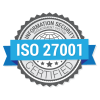Automation has become a buzzword in the world of business, and for good reason. The term was already familiar as far 1946, used in the automobile industry at the time to describe the increase use of automatic devices and controls in mechanized production lines.
Manufacturing industries started using automatic devices and robotic machines at the time to increase productivity and decrease production expenses.
Nowadays the advancement of technology in artificial intelligence and machine learning is ushering a new age of automation.
Computers and robots are now capable of performing routine work tasks that may involve cognitive capabilities, better and faster than most humans.
The automation of an organization’s processes can lead to significant benefits, including increased efficiency, cost savings, improved accuracy, and better monitoring of internal documentation.
In this article, we will explore these benefits and advantages and discuss the types of software that can assist with the automation process according to your organization’s needs.
Gartner studies show that finance departments can reduce the amount of time spent on unnecessary rework tasks by 30% by utilizing Robotic Process Automation (RPA) in their reporting processes.
This can lead to significant cost savings for the organization. The adoption of automation technology is often driven by the desire to improve cost efficiency and productivity. Let’s look into these benefits in more detail.
Efficiency
One of the most significant benefits of automating an organization’s processes is increased efficiency. Automation eliminates the need for repetitive manual tasks and streamlines processes, which means that work is completed more quickly and with fewer errors.
This results in increased productivity, as employees are able to focus on more important tasks.
Cost Savings
Automation can also result in significant cost savings for an organization. By automating tasks that were previously done manually, an organization can reduce its labor costs.
Additionally, automated processes often lead to fewer errors, which can reduce the costs associated with rework or correcting mistakes.
Improved Accuracy
Another benefit of automation is improved accuracy. Human error is a common issue in manual processes, but automation can greatly reduce the risk of errors.
This is especially important for tasks that require a high degree of precision, such as financial calculations or data entry.
Better Document Monitoring
Automation also enables better monitoring of internal documents. By automating document workflows, an organization can ensure that documents are processed and approved quickly and efficiently.
This is especially important for sensitive documents, such as contracts or financial reports.
Other Advantages
Although the benefits above are the most broadly known, there are plenty other advantages that organizations can experience when they implement automation in their processes. One of these advantages is increased scalability.
Automation can make it easier for organizations to scale their processes to accommodate growth, without having to worry about the increased workload causing a backlog in manual processes.
This means that as the organization grows, it can continue to operate efficiently and effectively.
Another advantage worth mentioning is that it can also lead to improved the organization’s compliance and risk management efforts.
Automated processes can help ensure that an organization is following established procedures and regulations, reducing the risk of non-compliance and potential penalties.
Automation can help identify potential risks and issues before they become larger problems, allowing for proactive measures to be taken to prevent issues from occurring.
Types of Software for Automation
There are many types of software that can assist with the automation of an organization’s processes. These include:
1. Business Process Management (BPM) software: BPM software is designed to help organizations automate, manage, and optimize their business processes. It allows organizations to define, model, and execute their workflows, ensuring that tasks are completed efficiently and accurately.
2. Robotic Process Automation (RPA) software: RPA software is designed to automate repetitive, rules-based tasks. It can be used to automate tasks such as data entry, data extraction, and report generation.
3. Document Management software: Document Management software is designed to help organizations manage their documents electronically. It can be used to store, track, and manage documents, ensuring that they are processed efficiently and securely.
4. Spend Optimization software: Optimization software is designed to cover a wide range of categories within IT, including telecom, data networks, infrastructure, and cloud and provides a mix of the above mentioned software. They provide automation, insights and analytics to help companies gain the full potential that spend optimization can offer, by automating the process of identifying and managing opportunities in cost savings, process automation, contract risk management, and cost avoidance.
Overall, the benefits of automation are clear, and the software solutions available to organizations can help them automate their processes and achieve these benefits.
With increased efficiency, cost savings, improved accuracy, and better document monitoring, as well as improved scalability, compliance, and risk management, automation can be a game changer for organizations looking to improve their operations and stay competitive in today’s business environment
By utilizing the right software, organizations can automate their processes and reap these benefits. Whether it’s BPM, RPA, Document Management, or the new category of Spend Optimization software, the key is to choose a solution that is tailored to the organization’s specific needs and goals.
With the right software in place, organizations can streamline their processes, reduce costs, and increase their overall productivity.
It’s safe to say that automation solutions will very soon be a standard component of most business processes.
Although conservative management in organizations will no doubt be worrying about the impact of automation on employment, the focus should be to to integrate automation into their operations so they can stay ahead of the competition and remain relevant in their respective industries.
This means that organizations that have not yet adopted automation should begin their automation journey and fully embrace automation to unlock its full potential for their business.


